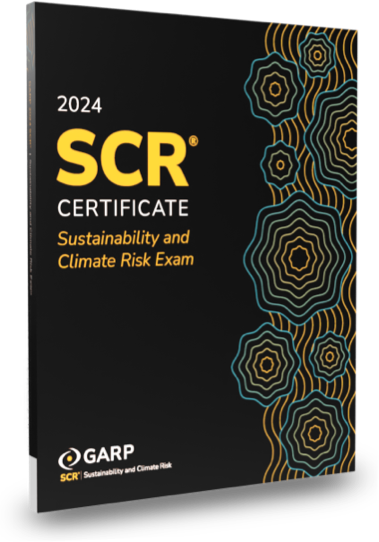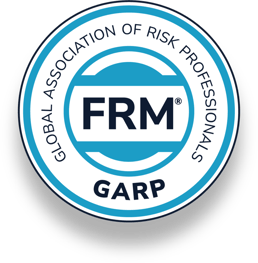
2026
FRM Candidate Guide
The FRM Candidate Guide provides candidates and prospective candidates with an overview of the FRM Program and curriculum, information about the exam process and study materials, insight into how to leverage your FRM designation, and more.

2026
FRM Learning Objectives
The FRM Learning Objectives helps candidates self-study for the FRM Exam. It contains a syllabus and approximate weightings for each of the broad knowledge domains covered by the Exam, specific curriculum readings associated with each knowledge area, and individual learning objectives for each reading.

2026
FRM Study
Guide
The FRM Exam Study Guide sets forth primary topics and required readings for exam preparation. The FRM Program curriculum is revised annually under the direction of GARP’s FRM Committee to ensure that the Exam remains a valid assessment of the knowledge and skills necessary to manage financial risk.


Accessible via the candidate portal on any device — mobile, tablet, or desktop computer — GARP Learning is a streamlined digital learning platform allowing FRM candidates to:
-
View all material from the FRM Books for both parts of the Exam
-
Take full-length practice exams
-
Monitor study performance, create personalized study plans, and more
-
Test their knowledge with practice questions (not representative of actual FRM Exam questions) that coincide with each curriculum chapter
GARP Learning access is complimentary for Part I candidates, and available for purchase for Part II candidates. Access to all content in GARP Learning is revoked the last day of the exam window a candidate is registered in.
Included With Registration
USD 250

2026
FRM Exam Books - Part I
Printed books for the FRM Exam Part I Exam focus on the following relevant topics:
-
Foundations of Risk Management
-
Quantitative Analysis
-
Financial Markets and Products
-
Valuation and Risk Models
Note: Access to the full Exam Part I curriculum is also available via GARP Learning, which is complimentary for Part I candidates. All printed books are non-refundable.

2026
FRM Exam Books - Part II
Printed books for the FRM Exam Part II Exam focus on the following relevant topics:
-
Market Risk Measurement and Management
-
Credit Risk Measurement and Management
-
Operational Risk and Resilience
-
Liquidity and Treasury Risk Measurement and Management
-
Risk Management and Investment Management
Note: Access to the full Exam Part II curriculum is also available for purchase on GARP Learning. All printed books are non-refundable.

FRM Part II Online Readings
In addition to the information contained in the official FRM books, the FRM Exam Part II tests candidates on material from leading academics and practitioners. These are considered required readings and are a part of the FRM curriculum.
Candidates can also access optional readings. While not required, these readings provide additional insights into the context and mechanics of the Basel regulations and are therefore highly recommended.
FRM Practice Exams
Candidates of the FRM Exam Part I will receive two complimentary, full-length practice exams with the option of purchasing a non-refundable third exam, each comprised of 100 questions and accessible via GARP Learning.
Candidates of the FRM Exam Part II will receive two complimentary, full-length practice exams, each comprised of 80 questions and accessible as downloadable PDFs via the candidate portal. Practice exams are accessible for registered FRM candidates only.
Access to all practice exams will be revoked the last day of the exam window a candidate is registered in.


Curriculum Errata
If you believe you have identified an error or discrepancy in the curriculum, please contact us. We pursue all errata submissions and post updated errata including corresponding corrections on this site.
Exam Preparation Providers
Some candidates for the FRM Exam may wish to study the exam material with the assistance of an FRM Exam Preparation Provider (EPP). EPPs may offer courses online or in person. As a service GARP provides FRM candidates with a list of providers on its website. Please note that GARP does not endorse, promote, review, or warrant the accuracy of the products or services offered by EPPs of FRM-related information, nor does it endorse any pass rates claimed by the EPP. Further, GARP is not responsible for any fees or costs paid by the user to an FRM EPP.
Ready to take the next step toward Certification?
Early registration for the May 2026 FRM Exam is now open.









.jpeg?width=150&height=120&name=Fintelligents%20Logo%20Jpeg%20(002).jpeg)





.jpg?width=252&height=110&name=Noesis_Full%20Color%20Logo%20(002).jpg)










![IFT New Logo HRes (002)[7] copy](https://www.garp.org/hs-fs/hubfs/Website/Exam%20Preparation%20Providers/IFT%20New%20Logo%20HRes%20(002)%5B7%5D%20copy.jpeg?width=130&height=120&name=IFT%20New%20Logo%20HRes%20(002)%5B7%5D%20copy.jpeg)


